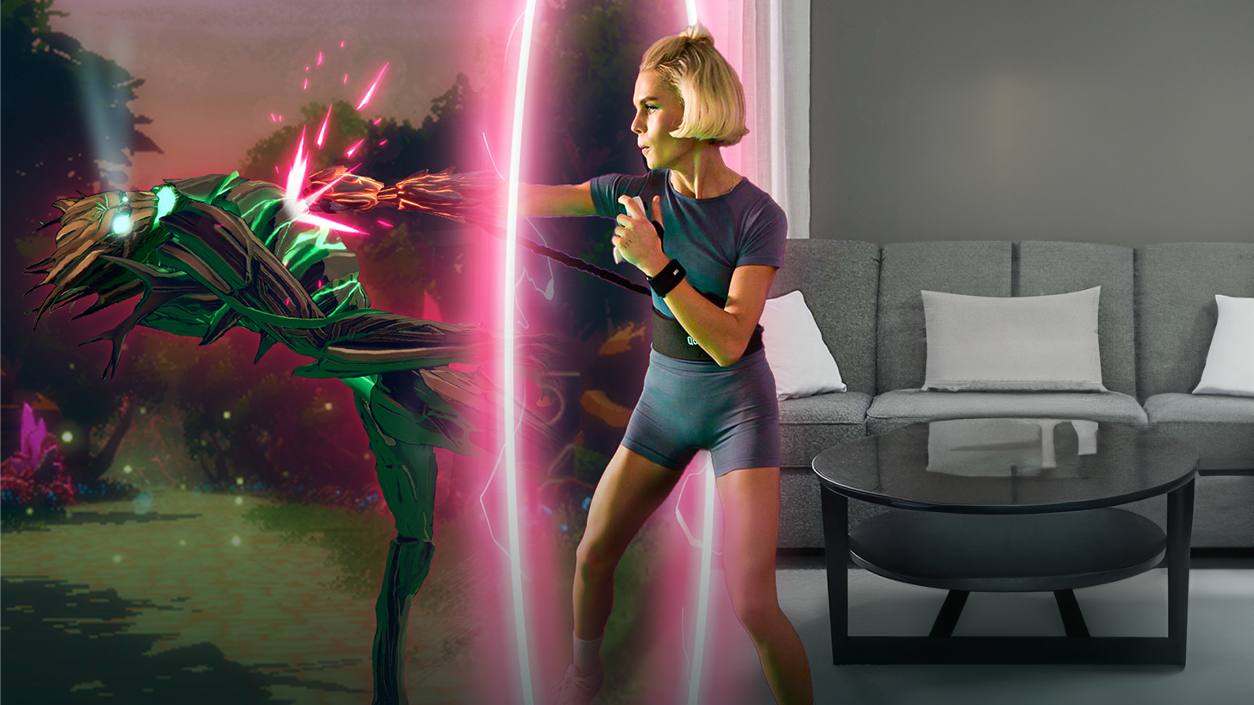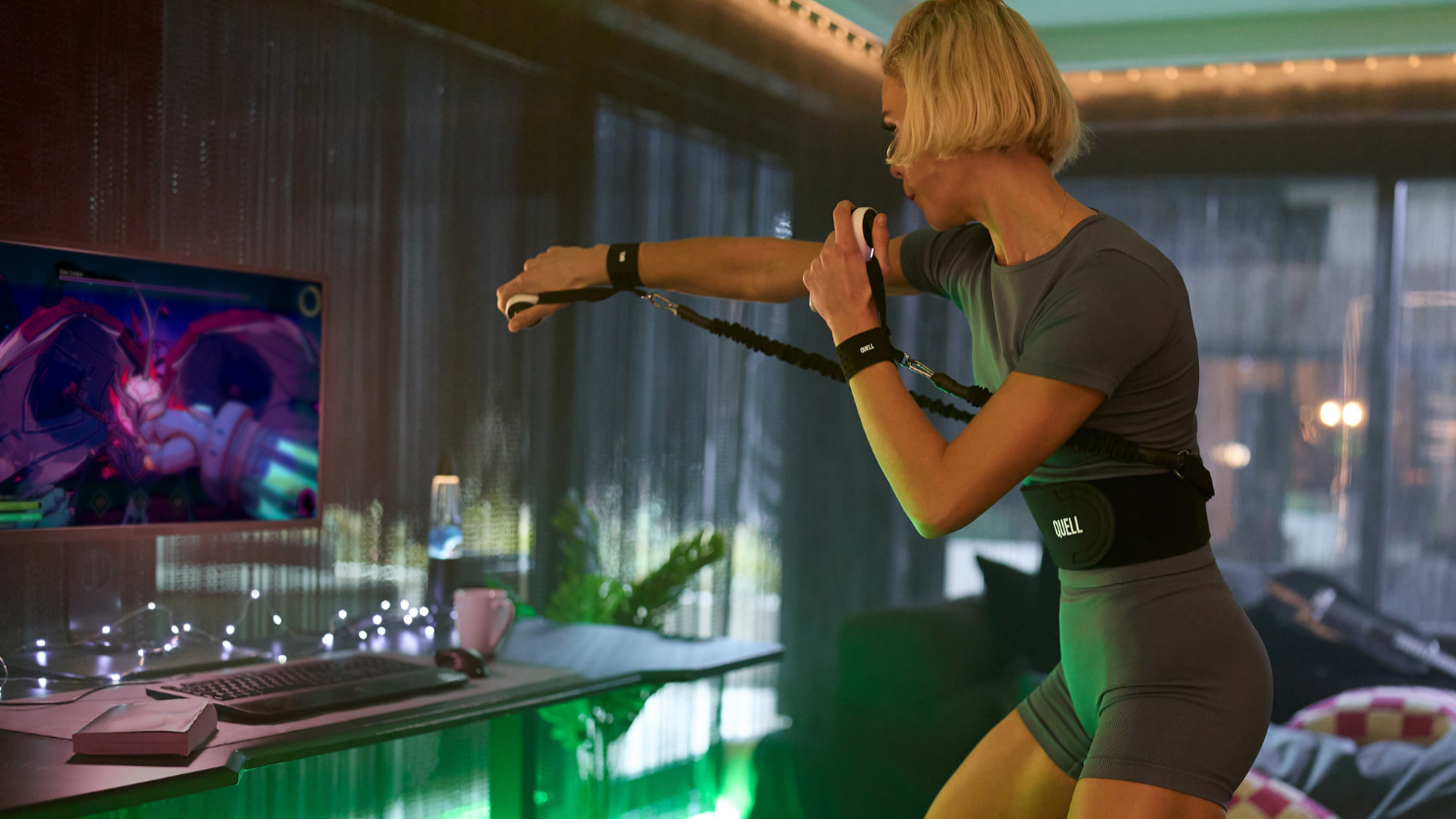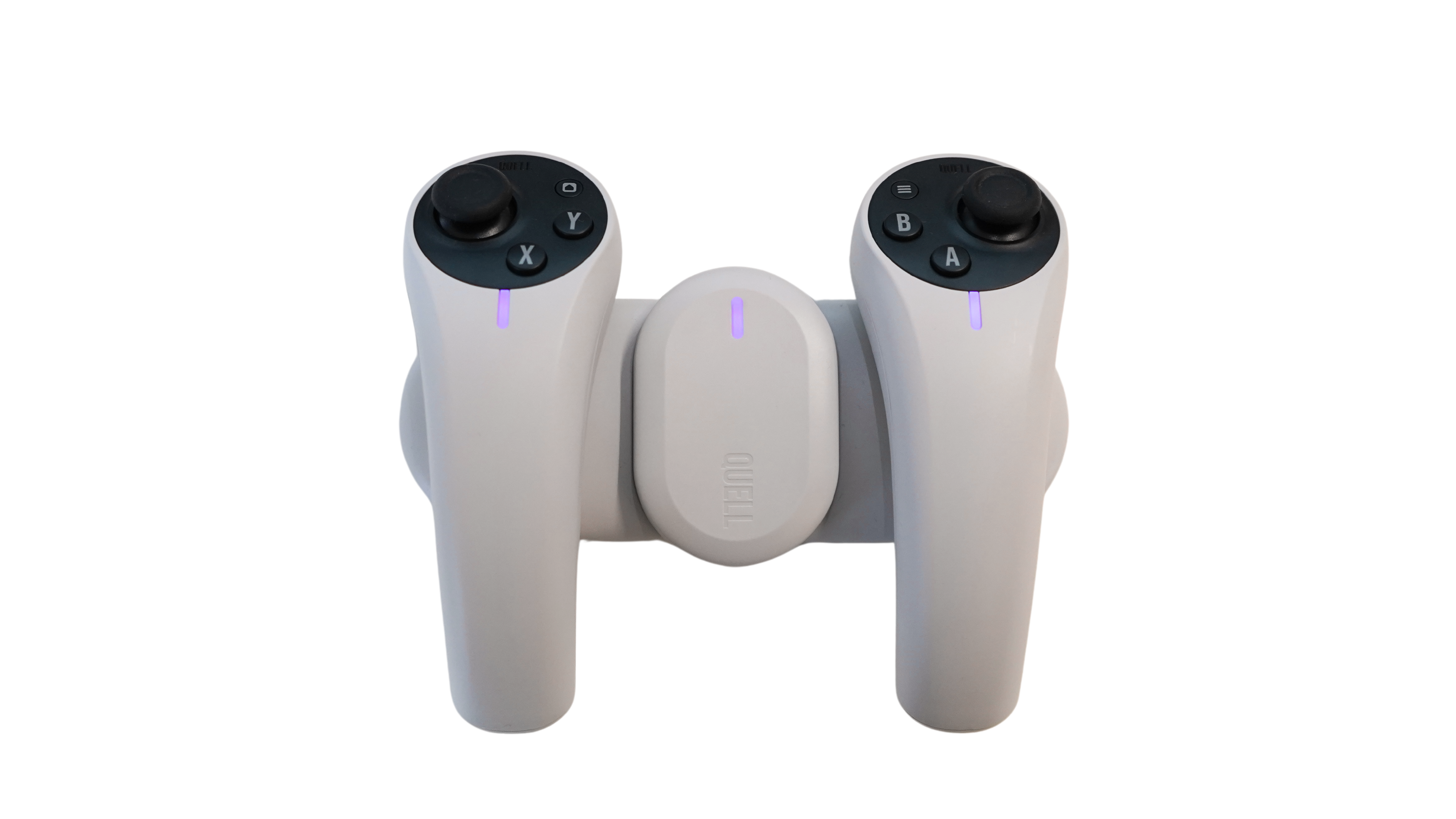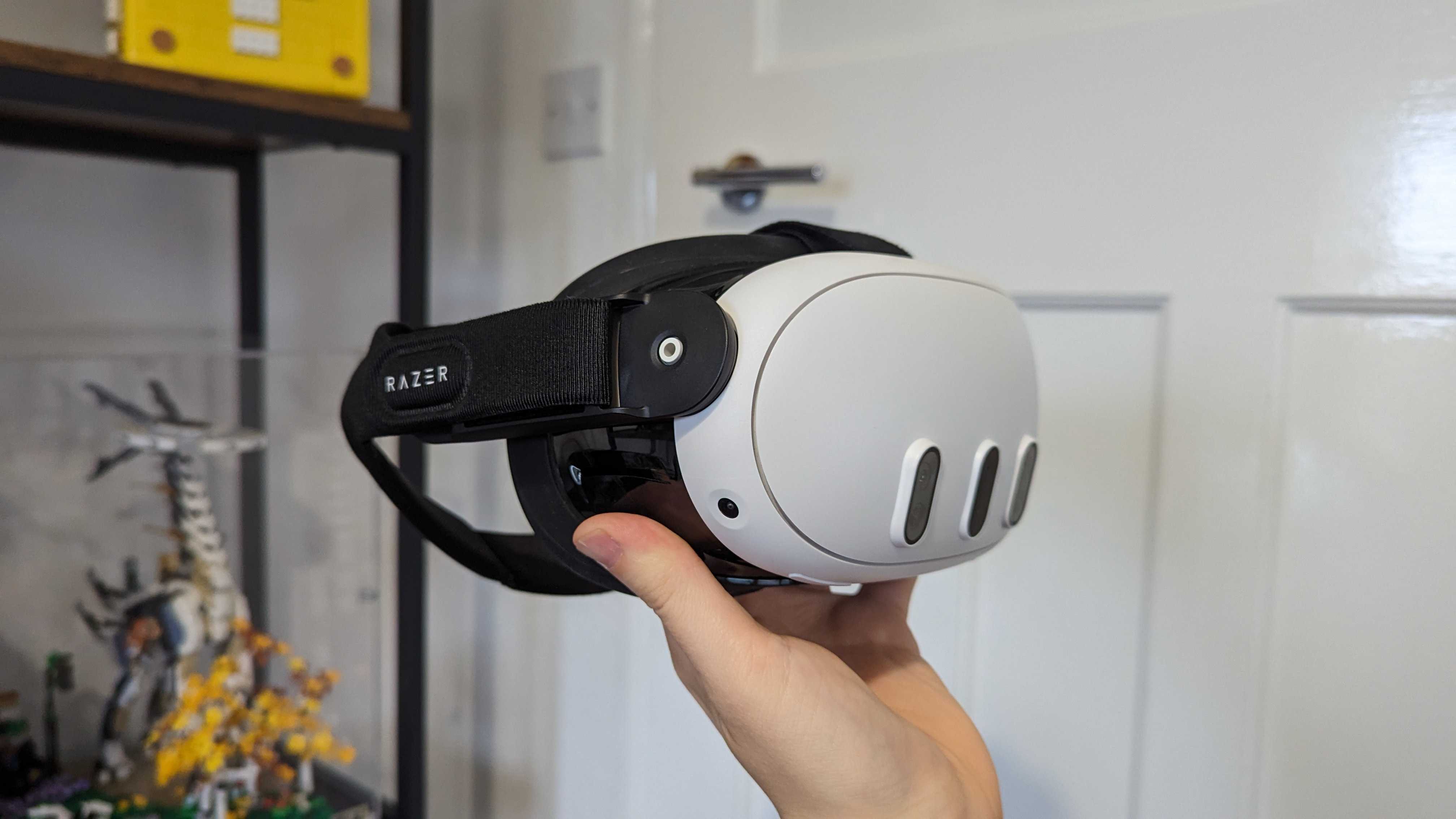You know you hate going to the gym, so you should try Quell instead, it's everything the Wii Fit dreamt of being and more
Struggling to commit to your fitness? Quell might be the answer

We all know we should be working out more, but as our collective trail of broken New Year’s resolutions makes abundantly clear, it’s really damn hard for us not to give up.
For me it’s not just the aching I feel in my muscles the days following a session; it’s how monotonous going to the gym or even just walking 10,00 steps every day can be. Sure I can stick on music or a podcast, but I’m still always struggling to engage with my workouts and eventually I lose all interest. I could try joining a local soccer club or another sport, but I lack the time and regular schedule to dedicate myself to a team game.
This is where Quell hopes it can come in – a new immersive fitness platform that aims to not only help you get fit but to have fun while you do.
Quell is hardly the first gamified fitness experience I’ve tried. Wii Fit is a now-forgotten classic, and I have a Ring Fit controller for my Nintendo Switch gathering dust somewhere. More recently, I started using my Meta Quest 3 to do VR workouts with great success (it’s something I’ve actually stuck with), but Quell manages to take things up to a whole new level.
The full-body HIT sessions feel intense, but the game does a great job of keeping me motivated by contextualizing my actions – I’m not just doing another rep for the sake of it; I’m throwing another punch because I need to defeat this enemy. At $269 / £249, it isn’t cheap, but in the context of fitness equipment, the price doesn’t seem too bad, and given how compact the system is, you can take it wherever you travel – something you can’t do with a treadmill.

What is Quell, and why do I love it?
Because it’s my most recent example and my favorite form of gamified exercise so far, I’ll be comparing Quell to VR workouts, but I want to make clear that it isn’t a VR accessory.
Instead, Quell is its own dedicated system of trackers – a chest pod you wear in a belt that goes around your midriff and controllers you hold in each hand – that send data to a USB dongle you plug into your PC, which is running Quell’s software. As you run on the spot, squat, jump, and punch the hardware translates your actions into a digital experience – kinda like an Xbox Kinect, but better.
Get daily insight, inspiration and deals in your inbox
Sign up for breaking news, reviews, opinion, top tech deals, and more.
The first Quell game is Shardfall – a high-fantasy-inspired title in which you fight back against corruption trying to infect the land – but the team has said more projects are on the way soon.
They couldn’t tell me much beyond their working titles – creatively called ‘Game 2’ and ‘Game 3’ – and that they’ll offer something different to Shardfall. The Quell team has confirmed one of these games will be multiplayer, and I expect the settings will be different, too (I'm hoping for something sci-fi), but we'll have to wait and see.
Even as my only option right now, Shardfall has been a blast to play. There's a good amount of enemy variety to keep my boxing matches from feeling repetitive, and I enjoy the world leveling and equipment system – which find ways to keep it feeling like my character is getting more powerful as I progress through the adventure with in-game buffs, while still keeping the workouts feeling like a challenge.
Another great feature is Shardfall's branching paths, allowing me to choose the short-term buffs I want to equip for that particular run, with different well-named archetypes such as the healing-focused Moonchild or damage-bosting Flamebringer. When I reach the end of a session the path branches one last time, allowing me to either go to the boss fight or carry on if 20 minutes isn't long enough (though it always is).
Moreover, because this isn’t a VR game, Shardfall can become a full-body HIT workout more easily without making me want to hurl from motion sickness. I can sprint through the levels, making it feel like I'm exploring a wider world but ensure my lower body puts in the same level of work as my upper body – something I’ve found isn’t easy to achieve in VR.
Adding to the difficulty are a pair of resistance bands that come with your setup. You’ll get level one by default (which I use), but they go up to level three. These connect your wrists to the belt, making it much harder to shadowbox. Fights really feel like fights with even the level one band equipped – after the 20- to 25-minute session, I’m exhausted.
An imperfect system at times
That’s not to say Quell is perfect quite yet – it has only just launched, so there were always going to be hiccups to sort out.
My biggest gripe is I feel the sensors didn’t always track my effort properly – particularly the chest pod. It always knew when I jumped, but sometimes it wouldn’t log my squats or pick up that I was jogging at the pace Shardfall wanted me to. Sometimes the speed would be fine, other times the same jogging speed wouldn’t count.
When I did a pre-release demo with the developers, they suggested that I use high knees during the sprints to get through those particular running sections. That worked most of the time, though again, there was the odd occasion when I felt my effort went unrewarded.
Though I never failed a mission because of these tracking errors, and at the end of the day, I did still put in the work; this issue could be solved with a personalized calibration process to avoid these missed actions.

For new hardware that can currently only access one title, its $269 / £249 cost (it’s unfortunately not available in Australia), with a subscription on top that’s $9.99 / £9.90 per month or $79.90 / £79.90 for a year to access the games is perhaps a tough sell.
That said, for fitness equipment, the price is fairly reasonable, and I’m sticking with Quell more than I have a treadmill, which certainly makes it a significantly better value for the money.
Another advantage it has over typical exercise equipment is it’s surprisingly compact. The belt, bands, tech, charging dock, and charger all fit in a tight pack that’s easy to chuck in a bag when you travel.
You also don’t need a super beefy setup to run Shardfall. During my test, I set it up on my partner’s Asus notebook – a slim laptop that lacks a dedicated GPU – and found that it could run Shardfall without any game-breaking hiccups on low visual settings. You can check out the full system requirements on the official website, but the fact it could run on a low-spec laptop plays into this portability advantage.
However, this did lead to my other main gripe: I couldn't transfer or share progress between systems (or at least it wasn't obvious) – meaning when I swapped to the notebook, I had to start again from scratch – which was a tad frustrating. Considering I’m using the same account to log in, I’d love to have a cloud save I can access during the setup step so that my Shrdfall playthrough can carry over between machines.
Should you buy it?
I’ve fallen in love with Quell over the past couple of weeks, and I genuinely feel it could be the workout solution you’re after if you’ve struggled to commit to going to the gym.
VR fitness is also still a solid option. I’m still planning to use my Quest 3 to work out regularly, and there’s a definite plus to having a device that can do more than help me work out.

But its complete lack of motion sickness allows for more active lower body exercise, and the resistance bands that make the workout feel way more intense do give Quell a leg up for people looking for something that’ll challenge them more physically. So I'll keep relying on Quell for sure, too.
Quell is available to buy right now from its online store and should be coming to Amazon in the US and Selfridges in the UK soon.
If you aren’t quite convinced by Quell yet, I’d recommend at least keeping an eye on it. As more games are released, I think it will only get stronger and become the gamified fitness device that the Wii Fit or Xbox Kinect always felt like they should have been.
You might also like

Hamish is a Senior Staff Writer for TechRadar and you’ll see his name appearing on articles across nearly every topic on the site from smart home deals to speaker reviews to graphics card news and everything in between. He uses his broad range of knowledge to help explain the latest gadgets and if they’re a must-buy or a fad fueled by hype. Though his specialty is writing about everything going on in the world of virtual reality and augmented reality.
